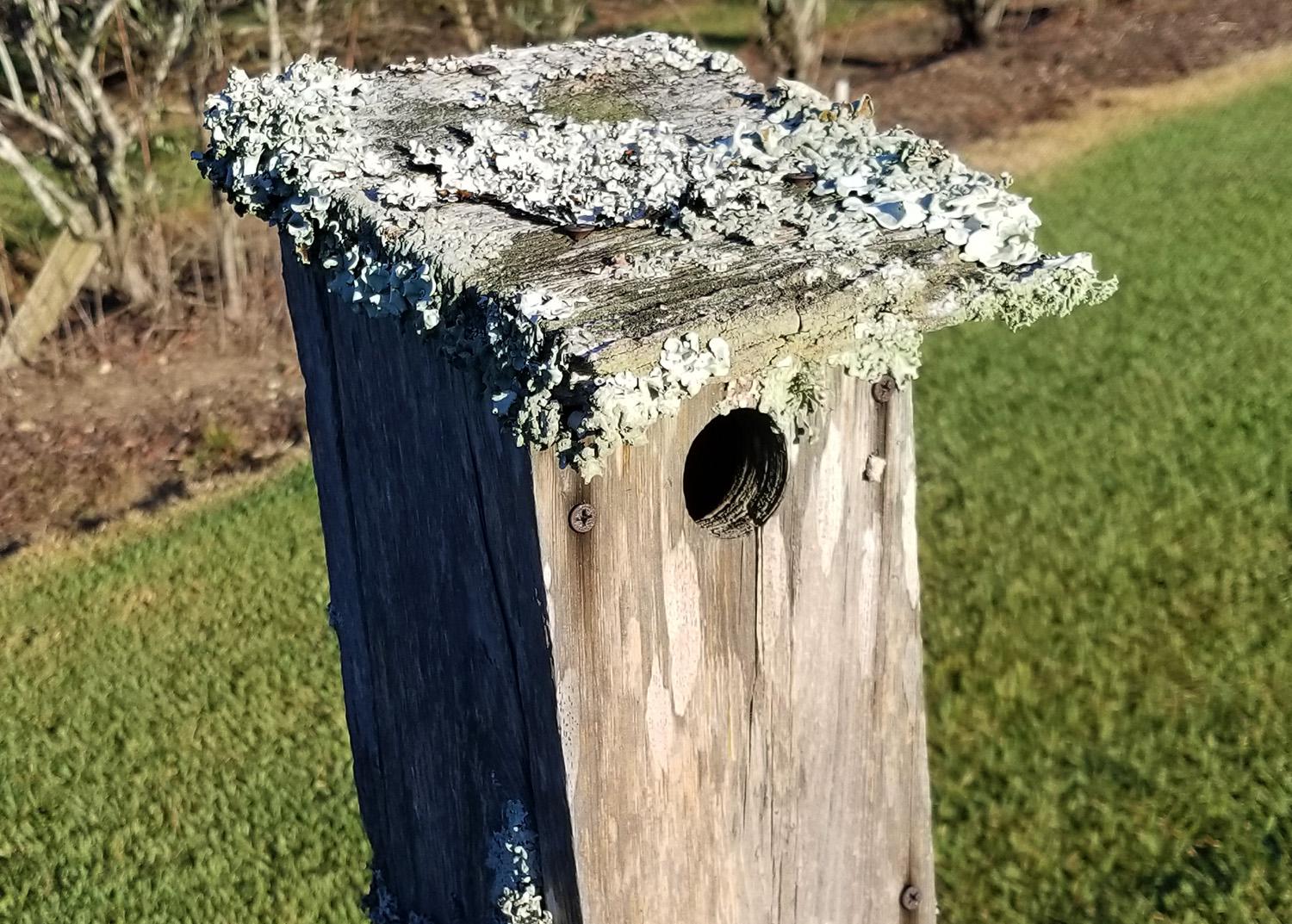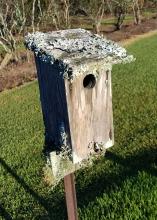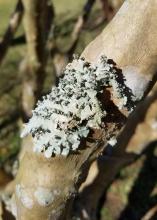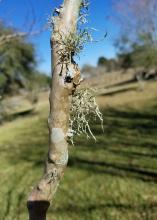Information Possibly Outdated
The information presented on this page was originally released on October 26, 2020. It may not be outdated, but please search our site for more current information. If you plan to quote or reference this information in a publication, please check with the Extension specialist or author before proceeding.
Unusual lichen does not harm host plants
Lots has changed during this year of the COVID-19 pandemic. For one thing, there has been a dramatic increase in interest in the home landscape and garden. People are spending more time in the garden and actually taking a look at what’s going on.
In fact, gardeners are taking very close looks, which can result in them finding things that some think can only occur in the crazy COVID year. And believe me, I gets calls and emails about them all.
One thing that causes the most landscape consternation is lichen.
Generally, lichen sightings are most common in January or February, but I’ve been getting panicked calls all year about this greenish-gray mold that people are afraid is killing their trees and shrubs. It’s understandable that this unnatural-looking “stuff” seems to be the cause of the problem.
The good news is that lichen is not the cause of whatever is going on. Let me say that again: Lichen is not killing your plants!
Lichen is an unlikely combination of fungi and algae that live in a symbiotic relationship using the tree and shrub bark for support. They are not feeding on the plant.
Lichen actually can feed itself. The algae act like the leaf of a plant and use photosynthesis to convert sunlight into sugars to supply the food, while the fungi act like plant roots to gather water and other needed nutrients.
These interesting organisms are found throughout the world. There’s always lichen on tree trunks, and these organisms will grow on any hard surface outdoors, from wooden fences to rocks and birdhouses.
While lichen does not harm the host plants, its presence is an indicator that the trees and shrubs are under some kind of stress. This stress could be from temperature or from over- or under-watering.
Stress causes the canopy of the trees and shrubs to thin out, which allows more light to get into the canopy. In response to the higher light levels, the lichen becomes much more noticeable.
Adding to the confusion surrounding lichen is the fact that it can be present in different forms and structures, from wavy folds to hairy-looking balls of fuzzy growth.
If you have lichen on your trees and shrubs, you don’t have to remove it. Remember, lichen is not causing any problems.
The best strategy to ward off lichen is to keep your landscape plants in optimum condition. A healthy and well-growing plant will have a canopy that discourages lichen growth. Be sure to follow Mississippi State University Extension Service recommendations for watering, fertilization and other best management practices. Light pruning of damaged branches encourages new branch growth, which, in turn, helps to establish a denser canopy.

an indicator that the tree or shrub is under some kind of stress.
(Photo by MSU Extension/Gary Bachman)
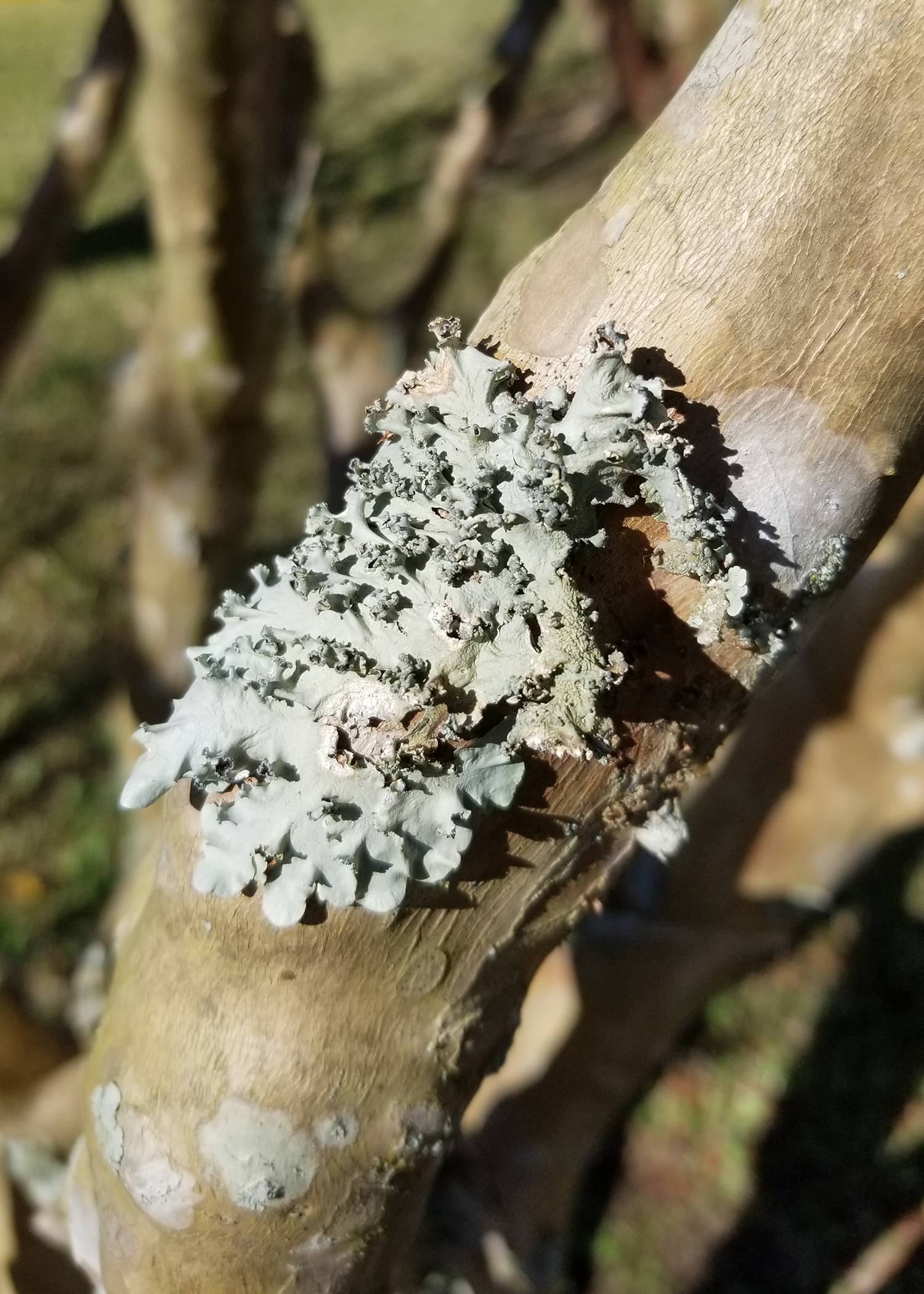
that live in a symbiotic relationshipusing the tree and shrub bark
for support. They do not feed on the plant.
(Photo by MSU Extension/Gary Bachman)

